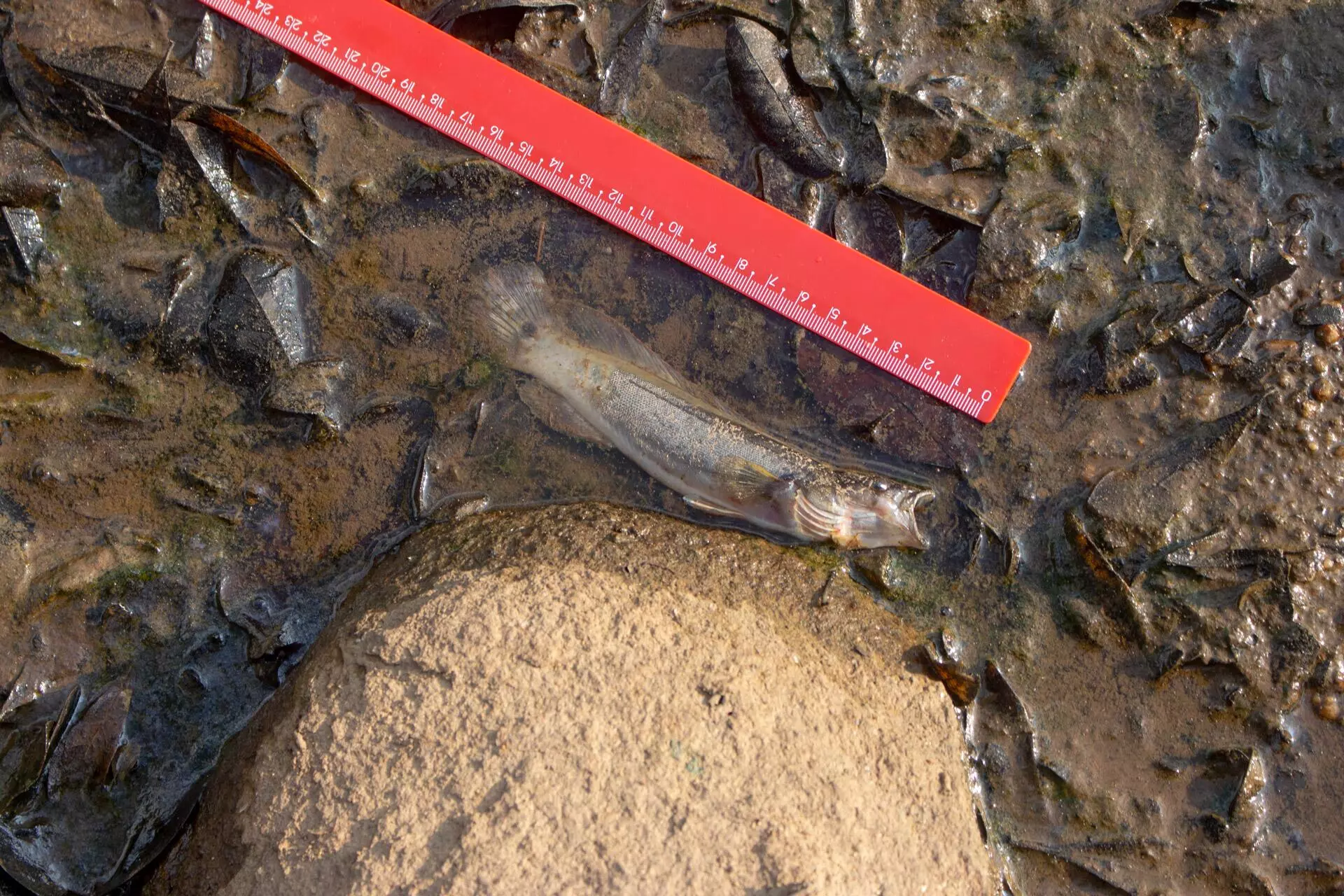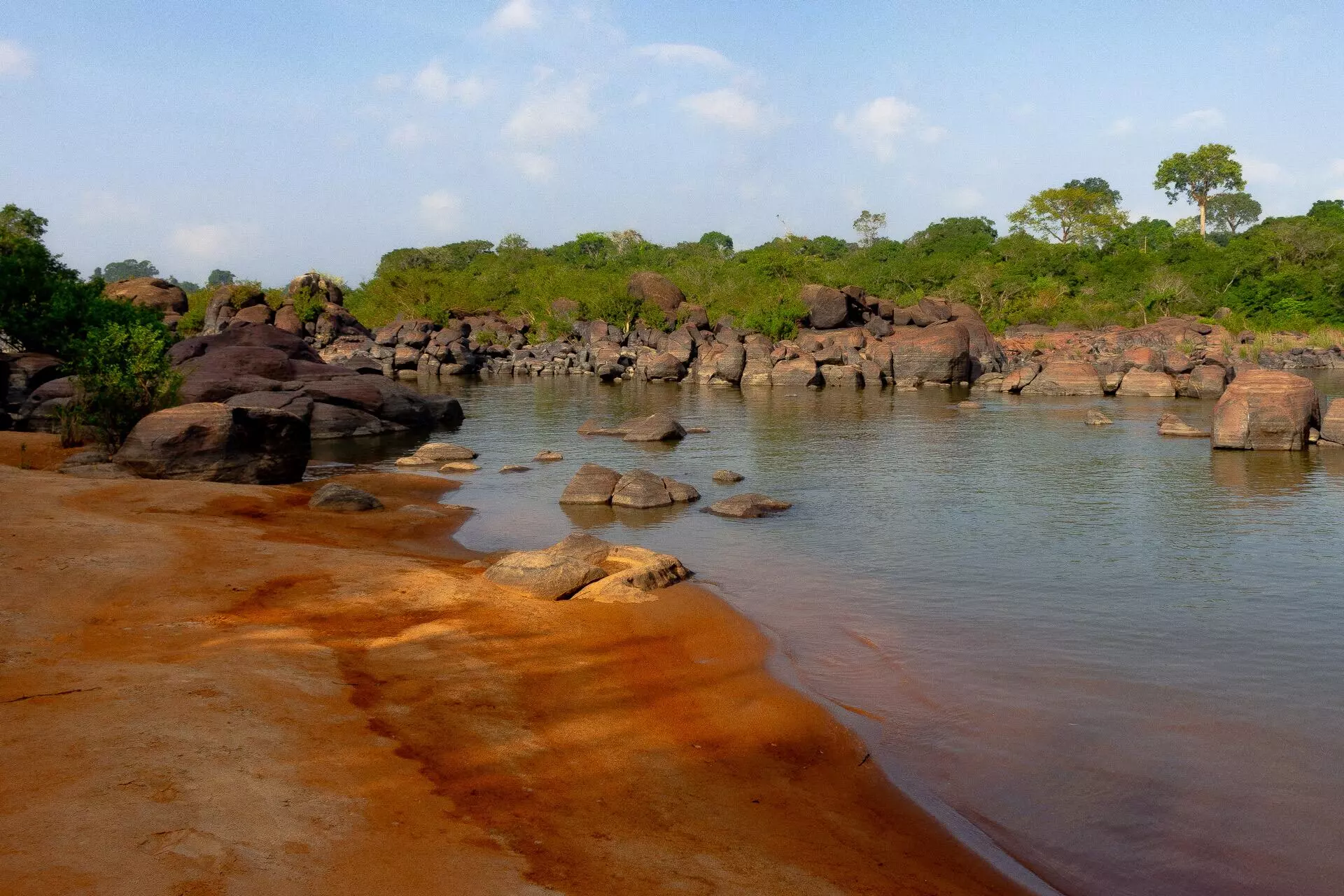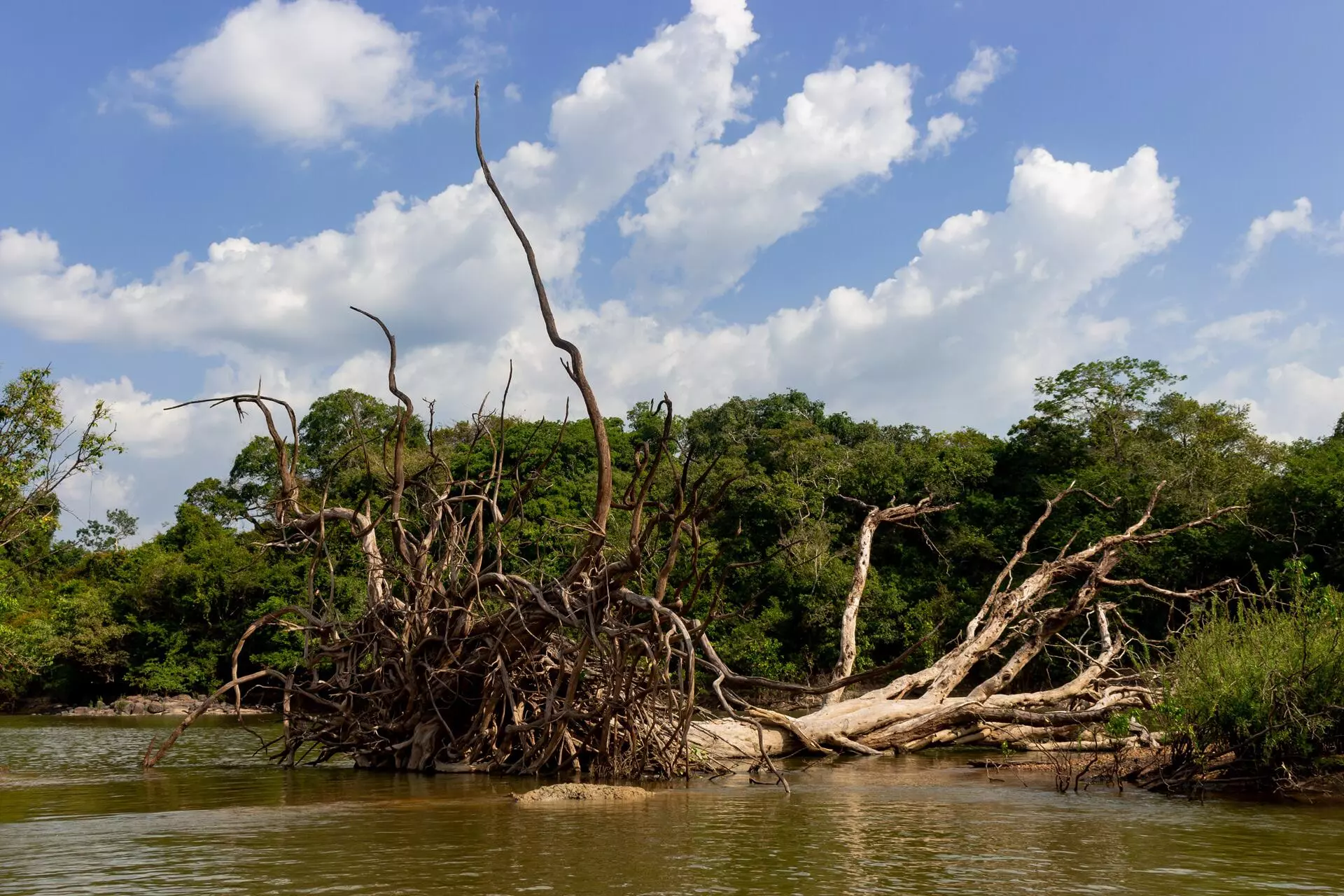High tree mortality, the disruption of the ways of life of three Indigenous peoples and of traditional forest communities, the risk that traditional fishing practices will vanish, unprecedented navigational obstacles and perils on the Xingu, unviable spawning conditions, and the silting up and erosion of the river—all forms of damage done by the Belo Monte hydroelectric power plant since it began capturing river water in the region known as the Volta Grande do Xingu. These are the findings of an inspection report, dated December 12, 2023, drawn up by a technical team at Brazil’s environmental agency Ibama.
The Ibama inspection took place between October 16-20, 2023, at the request of Indigenous peoples. Ibama, together with researchers from the Independent Territorial Environmental Monitoring project and representatives of the Federal Public Prosecutor’s Office, the National Foundation of Indigenous Peoples (Funai) and Norte Energia, the plant’s concessionaire, toured the stretch of reduced flow along the Xingu, where the plant draws 70% of the water it uses to generate power. The aim was to verify the damage caused when water is deviated from Indigenous lands in the Brazilian Amazon, where the Yudjá/Juruna, Arara, and Xikrin peoples live.
Environmental reports like this are done periodically as part of licensing requirements and seek to identify any harm done by the operation of the power plant. The document makes 14 technical recommendations to Norte Energia, mostly related to jeopardized navigation. For Belo Monte to have the right to use the waters of the Xingu to generate energy, both Ibama and the National Water and Sanitation Agency, which manages Brazil’s national water system, require that the plant ensure navigability.
The report also contains recommendations regarding Belo Monte’s water management plan, meant to guarantee a balance between water diverted by the plant and water released to the river. Ibama specialists have asked the company to do new studies regarding silting and erosion on the Xingu and provide a permanent maintenance system for Indigenous boats, which suffer constant damage from the navigation hazards caused by Belo Monte.

Brought on by the power plant, the low flow of the river along the Volta Grande do Xingu has affected the entire food chain, causing fish to die. Photo: Soll/SUMAÚMA
The agency’s findings come at a delicate political moment for those affected by the dams. The National Council on Energy Policy (CNPE) is supposed to meet in 2023 and Belo Monte will be on the agenda, with a likely discussion of the proposal by the Mines and Energy Ministry to classify the power plant as strategic to the country’s energy security. If approved, the electric sector would join Ibama in monitoring the social and environmental impacts of Belo Monte. Such measure may constitute interference with environmental licensing. The council meeting has already been postponed twice. The new factor is the Ibama report. In the view of environmental specialists, if the electric sector—which focuses on power generation—gets involved in monitoring Belo Monte, it might mean a setback for the region’s traditional communities and the entire ecosystem. Furthermore, Brazil’s environmental laws do not provide for such a measure.
When asked by SUMAÚMA about the report findings, Belo Monte’s press office said the company would not comment. Our reporter also asked the Mines and Energy Ministry about its intention to start monitoring the effects of Belo Monte and whether it was aware of the technical report prepared by Ibama. In response, the ministry’s press office merely said a meeting of the National Council on Energy Policy should take place this December. The ministry claimed the agenda is still being defined.
According to Ibama, the Belo Monte dams have hindered spawning, “significantly” impacting local ways of life and reducing the social and cultural activities of the region’s original peoples. “The local way of life, which includes the activities of fishing and navigation, has been harmed by changes in the Xingu River water cycle, given the flows implemented by the Belo Monte Hydroelectric Power Plant,” Ibama experts concluded.
The report does not represent a final decision on the demand lodged by scientists, traditional forest communities, and Indigenous peoples that Belo Monte release more water into the river, but it is an official document that makes it clear how the plant impacts the ecosystem.
In addition to its drastic, artificial reduction of the water volume along the Volta Grande do Xingu, Belo Monte has had another serious effect, noted by Ibama: the erosion and silting up of the river. Sediment buildup has obstructed navigation along several stretches, and Ibama’s technical licensing team considers it necessary to “conduct a technical assessment of the change in the erosion and sedimentation pattern of the Xingu River and its tributaries.” For the agency, it is up to Norte Energia to carry out this study.

Three Indigenous peoples had their way of life disrupted, including the Yudjá/Juruna, of the Paquiçamba Indigenous Territory, where the river has silted up. Photo: Soll/SUMAÚMA
The Volta Grande needs water
The first recommendation in the Ibama report is for Norte Energia “to amend its water management plan along the stretch of reduced flow.” This means the company must guarantee enough water for fish to reproduce in the months of December, January, February, and March, “especially in spawning areas.” According to agency specialists, the water cycle should simulate the Xingu’s natural flow. This proposal meets a longstanding demand of local residents, who for years have watched rivers rise very late, in February, therefore preventing various species of fish from spawning.
In several parts of the report, the Ibama experts say they observed dead trees in floodplain forests along the Xingu: “The continued implementation of this water management plan will lead to a loss of these plant communities in habitats formed by islands and rocks,” the document concludes.

Last August, researchers from Indigenous peoples and traditional forest communities accompanied academics on a scientific expedition that conducted independent environmental monitoring. Photo: Soll/SUMAÚMA
Much of the Ibama report focuses on how water capture has harmed navigation in the Volta Grande region. Environmental impact studies for Belo Monte foresaw the problems now posed for navigation, and the operating license stipulates that the plant must ensure the preservation of local ways of life. Norte Energia is required to maintain support points in critical locations, with personnel hired to help cross dry stretches and rapids. However, Ibama specialists say there are not enough support points, while they also found problems with the provision of protective equipment, the size of the teams, and hours of operation.
At the same time that it has started raining more heavily in the Amazon region and the Xingu has begun rising, the Ibama report brings hope of change that will mitigate the damage done by the power plant. The fear now is that, under pressure from the Lula administration’s energy area, the new water management plan recommended by Ibama will be ignored before it is even enforced, for political and economic reasons that could spell the definitive end for the lives of Indigenous peoples, traditional forest communities, and trees and fish along the Volta Grande.
Report: Helena Palmquist
Fact-checker: Plínio Lopes
Proofreader (Portuguese): Valquíria Della Pozza
Spanish translation: Meritxell Almarza
English translation: Diane Whitty
Photo editor: Lela Beltrão
Editorial workflow, copy editing, layout and finishing: Viviane Zandonadi (with Érica Saboya)
Editors: Malu Delgado (news and content) and Talita Bedinelli (editor-in-chief)
Director: Eliane Brum

Along the Bacajá River, a tributary of the Xingu, the Ibama team encountered a landscape of death and has recommended new studies into the risks. Photo: Soll/SUMAÚMA





